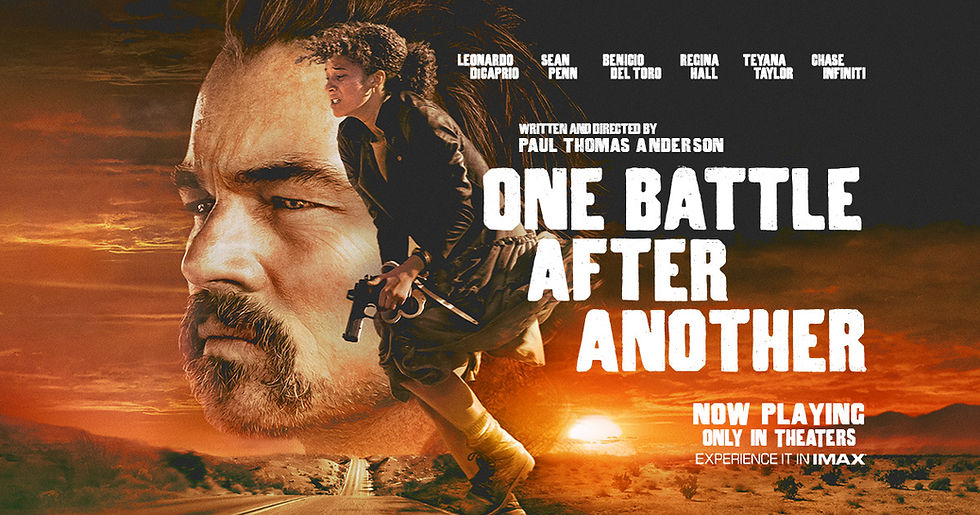One Battle fights action cliches
- Robin Holabird

- Sep 28
- 2 min read
Updated: Oct 31
Watching movies like The Master and Magnolia, I never thought of Paul Thomas Anderson as an action director, but I almost changed my mind after seeing the chases in One Battle After Another. …Or not because with some embarrassing transparency for a movie reviewer, I usually get bored and nod off during chase scenes and I stayed wide awake for Anderson’s exhilarating and innovative sequences in One Battle. The first pursuit switches a typical city chase by using aerial shots to show a fleeing vehicle squeezing through gaps in traffic; the second uses the up and down rolling effects of the Borrego Springs area to play a hide and seek game with just three cars. Besides those inventive visuals, I stayed awake for the rest of the film because I found its twists and turns unpredictable, even though I read its semi-source material years ago. Semi-source because Anderson credits the Thomas Pynchon novel Vineland but uses it more as an influence than map. Adapting the book, Anderson maintains a northern California setting, revolutionaries, government misbehavior, and a satiric tone. Despite a two-hour and forty-minute run-time and large mix of characters to grasp, One Battle moves swiftly. Anderson crosscuts

events but keeps the basics clear, even though the story resists summarizing in a single line or with some cute catchphrase. One lure? Leonardo DiCaprio and Sean Penn broadly playing over-the-top roles, grounded by a fine supporting cast that includes Benecio del Toro and Regina Hall. Another lure? An absorbing story that blends epic action with serious thoughts about changing a society where racism, sexism, and classism play such big roles. So action film? Yes. But one with a brain.



Comments